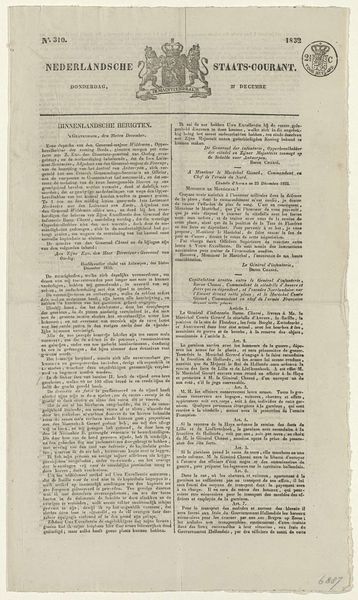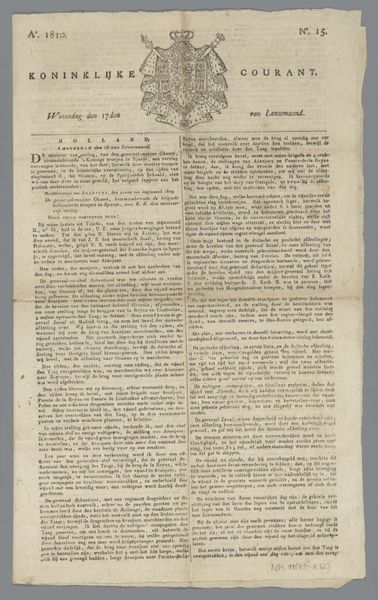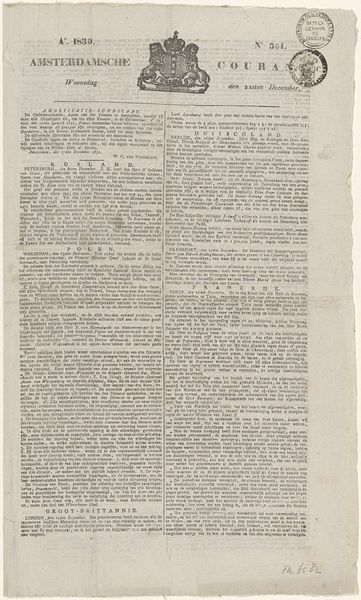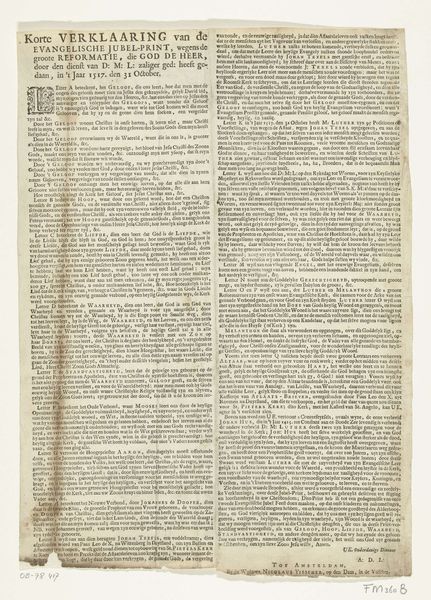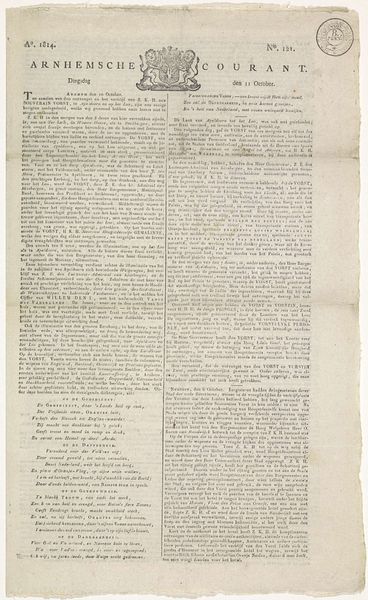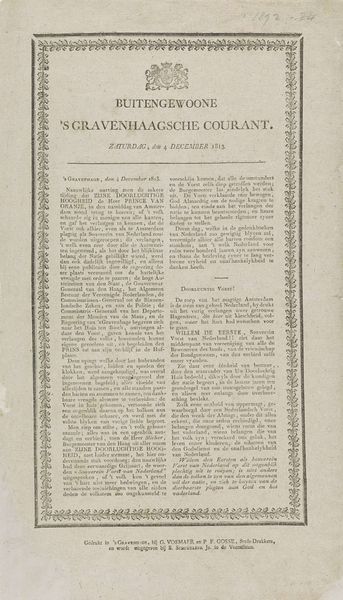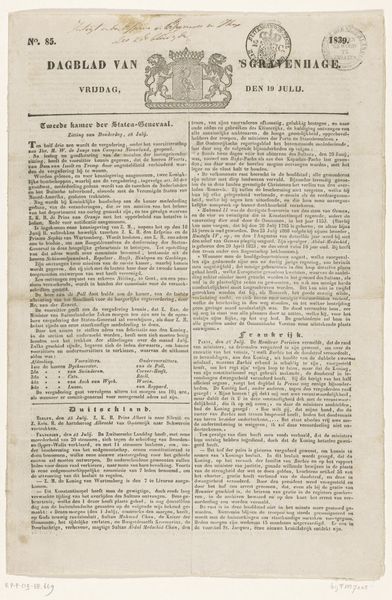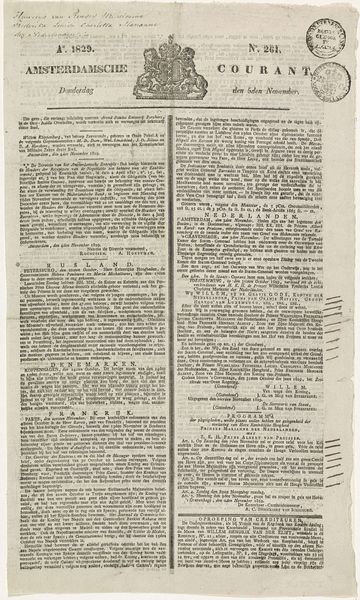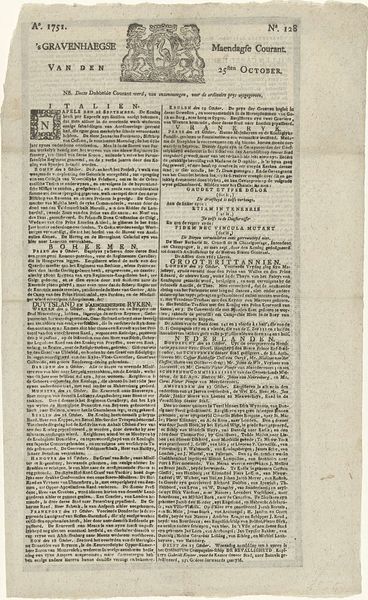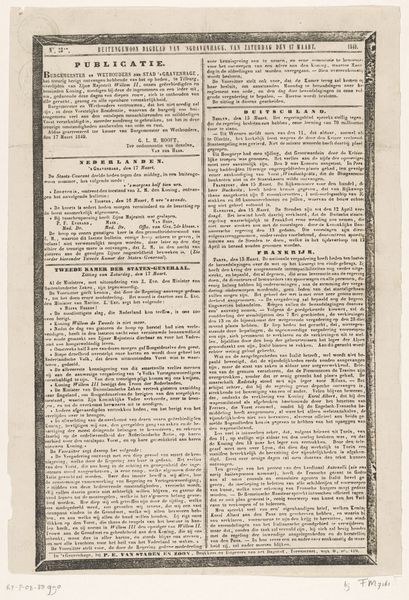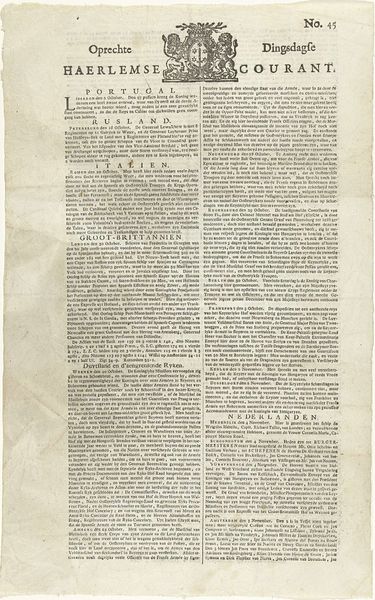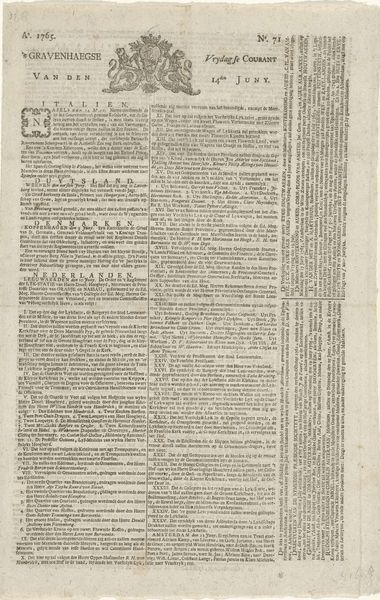
Nederlandse Staatscourant van 29 december 1832 Possibly 1832
0:00
0:00
graphic-art, print, textile, paper, typography, poster
#
graphic-art
#
dutch-golden-age
# print
#
textile
#
paper
#
typography
#
poster
Dimensions: height 463 mm, width 270 mm
Copyright: Rijks Museum: Open Domain
Editor: Here we have the *Nederlandse Staatscourant van 29 December 1832*, presumably from that same year, housed in the Rijksmuseum. It looks like an official gazette or poster, set entirely in typography, so it’s quite dense, visually. What stands out to you as you consider it? Curator: The immediate impression is the weight of language itself as a symbolic structure. Consider the heraldic imagery at the top – the lion rampant, the crown – juxtaposed with the rigid columns of text. These aren’t just words; they represent the voice of the state, attempting to project authority and order onto the world through pronouncements and regulations. What feelings arise when you observe such old printed material? Editor: I feel a certain disconnect; it seems archaic and foreign to today’s world of digital information, despite the continuity of newspapers. Curator: Exactly. Think about what a newspaper *meant* in 1832. It was a primary channel for disseminating information, shaping public discourse, and solidifying national identity. The choice of typeface, the layout—even the texture of the paper—contributed to that experience. Notice anything significant in particular? Editor: The heraldic symbols! Do they denote specific royal figures or state authority at the time? Also, considering the content, was this gazette intended for public consumption, or only certain elite groups? Curator: Yes, these heraldic emblems visually anchored the content, imbuing the words with the symbolic power of the Dutch monarchy. These publications, while "public," presupposed a literate and engaged citizenry, which invariably skewed towards wealthier, educated classes. A potent means of social cohesion and top-down governmental authority. What do you think? Editor: It helps to think of it as less about passive information and more as a means to embody a shared national experience through its consumption. It makes this single sheet all the more rich and captivating. Curator: Indeed. Symbols are powerful visual devices in newspapers like these that are easily missed, yet reveal what matters for cultures to express.
Comments
No comments
Be the first to comment and join the conversation on the ultimate creative platform.
